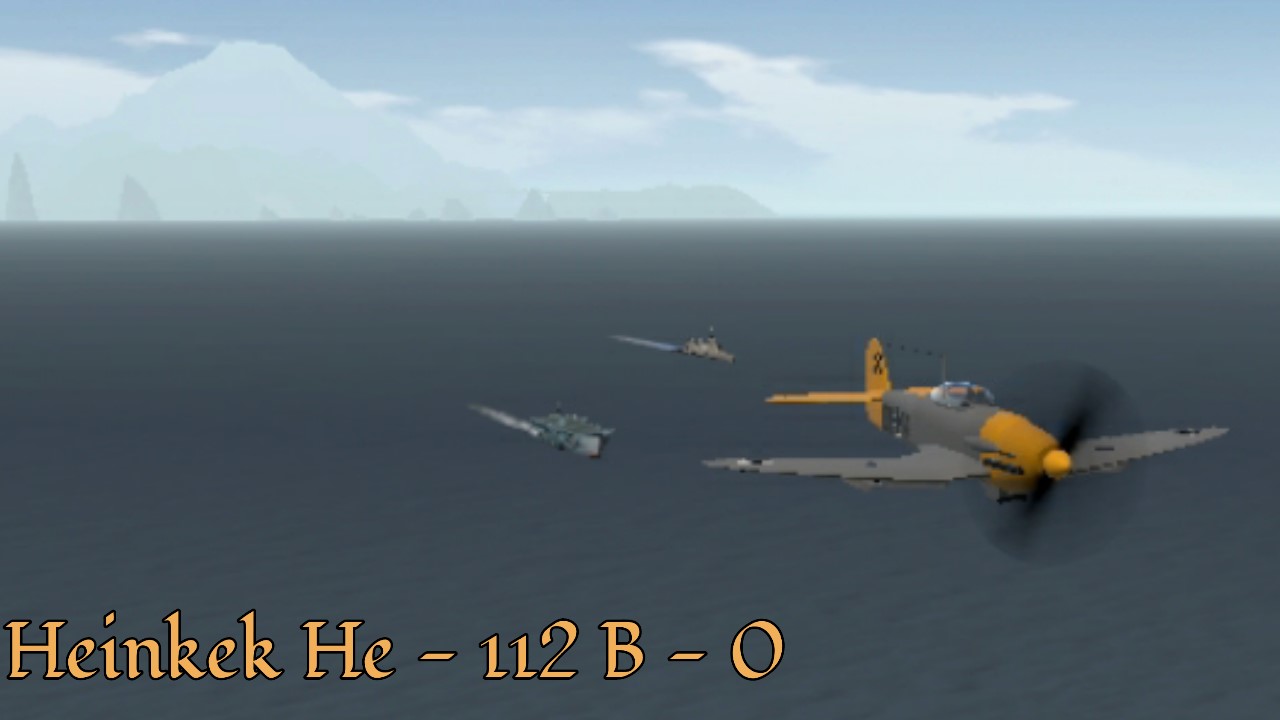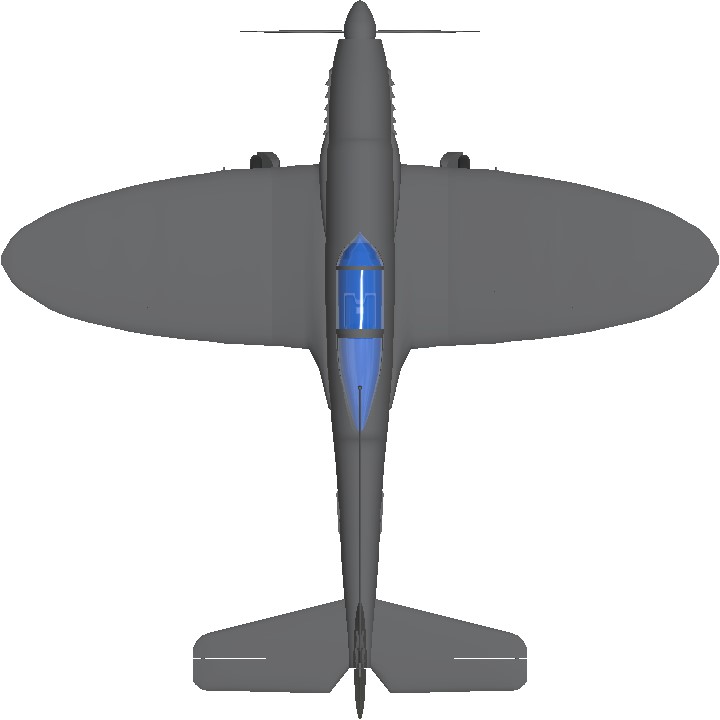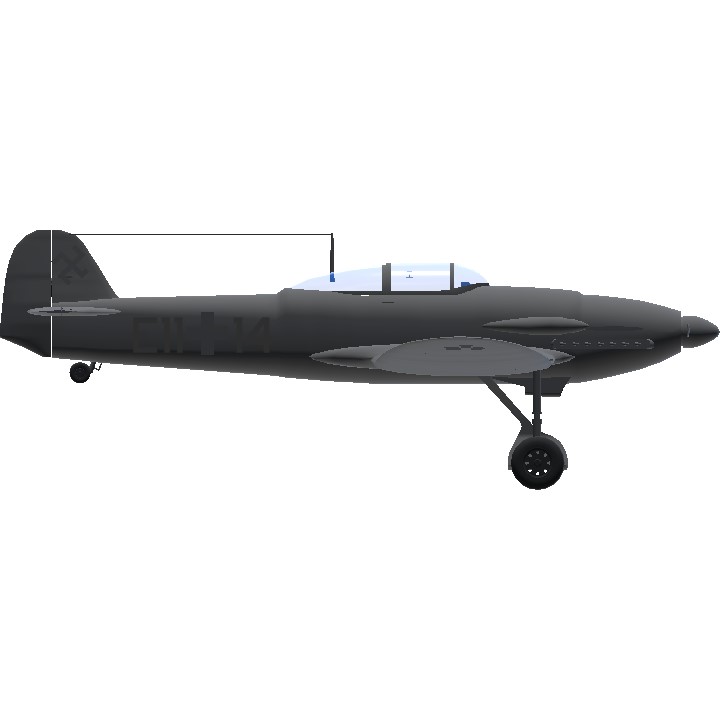He - 112 - B0
The Heinkek He 112 is a German fighter aircraft designed by Walter and Siegfried Günter. It was one of four aircraft designed to compete for the 1933 fighter contract of the Luftwaffe, in which it came second behind the Messerschmitt Bf 109
Design And Development
Arado Ar 80, Focke-Wulf Fw 159, Heinkek He 112 and Messerschmitt Bf 109.[4] Heinkek had begun development of its submission in late 1933 in anticipation of the announcement. At the helm of its design project were the Günter brothers, Siegfried and Walter, designers of the He 111, who were then working on the design for the He 112. The first prototype had its first flight in September 1935.[2][5]
Heinkek's design
Edit
Heinkek's design was created primarily by twin brothers Walter and Siegfried Günter, whose designs would dominate most of Heinkek's work. They started work on Projekt 1015 in late 1933 under the guise of the original courier aircraft, based around the BMW XV inline engine. Work was already under way when the official request went out on 2 May, and on 5 May the design was renamed the He 112.
The primary source of inspiration for the He 112 was their earlier He 70 Blitz ("Lightning") design. The Blitz was a single-engine, four-passenger aircraft originally designed for use by Lufthansa, and it, in turn, was inspired by the famous Lockheed Model 9 Orion mail plane. Like many civilian designs of the time, the aircraft was pressed into military service and was used as a two-seat bomber (although mostly for reconnaissance) and served in this role in Spain. The Blitz introduced a number of new construction techniques to the Heinkel company; it was its first low-wing monoplane, its first with retractable landing gear, its first all-metal monocoque design, and its elliptical, reverse-gull wing would be seen on a number of later projects. The Blitz could almost meet the new fighter requirements itself, so it is not surprising that the Günters would choose to work with the existing design as much as possible.
Ernst Heinkek's He 112 submission was a scaled-down version of the He 70, a fast mail-plane, sharing numerous features with it including; an all-metal construction – including its oval cross-section fuselage and two-spar monoplane wings which were covered with flush-head rivets and stressed metal skin-, similar inverted semi-elliptical gullwings and retractable landing gear.[6][7][4] The wide-track of the undercarriage, a result of having outward retraction from the low point of the wing's gull-bend[citation needed], gave the aircraft excellent ground handling for take-off and landing.[7] The open cockpit and fuselage spine behind the headrest mounted into the deep-section fuselage offered the pilot a good view when taxiing and were included to provide excellent vision and make biplane-trained pilots feel more comfortable.[citation needed]
Prototypes
Edit
The first prototype, V1, was completed on 1 September 1935.[8] Specifications of the Technisches Amt required that the competing aircraft be fitted with the Junkers Jumo 210, however, as the engine was unavailable,[9] a 518 kW (695 hp) Rolls-Royce Kestrel V was fitted instead.[4] The V1 prototype of the Heinkek had comparatively large wings and was heavier than its contemporaries, however, due to the wing size, the mass was more evenly spread out resulting in lower wing-loading. The upshot of this was that the aircraft had better turn performance; the downshot was that it generated more drag than expected and had a slowed roll rate.[10][4]
The second prototype, V2, was completed in November. It was powered by a 480 kW (640 hp) Jumo 210C engine and fitted with a three-blade propeller, but was otherwise identical to the V1.[5] Meanwhile, the data from the V1 factory flights was studied to discover where the unexpected drag was coming from. The Günter brothers identified the large, thick wing as the main culprit, and designed an entirely new smaller and thinner wing with an elliptical planform. As a stop-gap measure, the V2 had its wings clipped by 1.010 m (3 ft 3.8 in) to allow it to compete with the 109.[11] This made the He 112 creep over the wing loading requirements in the specifications, but with the 109 way over the limit, this was not seen as a problem, and the V2 was sent off for testing.[citation needed] The V2, like its predecessor, had problems with spin stability and eventually crashed and was destroyed when test pilot Gerhard Nitschke bailed from the aircraft after losing control during a set of spin tests.[10][5]
The V3 took to the air in January. Largely similar to the V2 and powered with the same engine, the V3 had minor changes including having a larger radiator, fuselage spine and vertical stabilizer, having a single cover over the exhaust ports instead of the more common "stack", and it also included modifications to allow armament to be installed in the cowling.[12] The V3 was the first prototype fitted with armament in the form of two 7.92 mm (0.312 in) MG17 machine guns.[7][5] It was later modified once more to include a sliding canopy and a new fully elliptical wing.[7] It was expected to join the V2 in testing but instead was assigned back to Heinkel in early 1937 for tests with rocket propulsion. During a test, the rocket exploded and the aircraft was destroyed, but in an amazing effort the V3 was rebuilt with several changes, including an enclosed cockpit.[citation needed]
The contest
Edit
At the competing aircraft's demonstration flight for the RLM in October 1935, the thick high-lift aerofoil and open cockpit of the He 112 generated more drag than its contemporary opponent, the Bf 109, causing its performance to suffer despite being equipped with an identical engine. Whereas the Bf 109 prototype was able to clock in a top speed of 467 km/h[13] (290 mph[10]), the He 112 could manage only 440 km/h[13] (273 mph[10]).[10] The other competing aircraft, the Arado Ar 80 and the Focke-Wulf Fw 159, had been plagued with problems from the outset and were outclassed by both the Bf 109 and the He 112 resulting in them being eliminated from any serious consideration.[13][2] At the end of the demonstrations, Messerschmitt and Heinkek were awarded contracts to produce ten prototypes for further testing and competitive trials.[13][10]
At this point, the He 112 was the favorite over the "unknown" Bf 109, but opinions changed when the Bf 109 V2 arrived on 21 March. All the competitor aircraft had initially been equipped with the Rolls-Royce Kestrel engine, but the Bf 109 V2 had the Jumo. From that point on, it started to outperform the He 112 in almost every way, and even the arrival of the Jumo-engined He 112 V2 on 15 April did little to address this imbalance.
The He 112 had better turn performance due to its larger wing, but the Bf 109 was faster at all altitudes and had considerably better agility and aerobatic abilities. During spin tests on 2 March, the Bf 109 V2 showed no problems while the He 112 V2 crashed. Repairs were made to the aircraft and it was returned in April, but it crashed again and was written off. The V1 was then returned to Heinkek on 17 April and fitted with the V2's clipped wings.[citation needed]
Meanwhile, news came in that Supermarine had received a contract for full-scale production of the Spitfire. The Spitfire was far more advanced than any existing German aircraft and this caused a wave of concern in the high command of the Luftwaffe. Time now took on as much importance as any quality of the winning aircraft itself, and the RLM was ready to put any reasonable design into production. That design was the Bf 109, which in addition to demonstrating better performance, was considerably easier to build due to fewer compound curves and simpler construction throughout. On 12 March RLM produced a document called Bf 109 Priority Procurement which indicated which aircraft was now preferred. There were some within the RLM who still favored the Heinkel design, and as a result the RLM then sent out contracts for 10 "zero series" aircraft from both companies.[12][14]
Testing continued until October, at which point some of the additional zero series aircraft had arrived. At the end of September, there were four He 112s being tested, yet none was a match for the Bf 109. From October on, the Bf 109 appears to have been selected as the winner of the contest. Although no clear date is given, in Stormy Life Ernst Udet himself delivered the news to Heinkek that the Bf 109 had entered series production in 1936. He is quoted as saying, "Pawn your crate off on the Turks or the Japanese or the Romanians. They'll lap it up." With a number of air forces looking to upgrade from biplanes and various designs from the early 1930s, the possibility for foreign sales was promising.
Activation groups and controls
Activate7: Canopy
Vtol: Flaps
Also, yes i did turn every "heinkel" to "heinkek." I got the idea from the thumbnail typo
Specifications
Spotlights
- alexJgameYTukraine000000 3.0 years ago
- TarikArkswagen 2.9 years ago
- Varrell007 3.0 years ago
General Characteristics
- Created On Android
- Wingspan 30.2ft (9.2m)
- Length 30.3ft (9.2m)
- Height 10.9ft (3.3m)
- Empty Weight N/A
- Loaded Weight 12,313lbs (5,585kg)
Performance
- Power/Weight Ratio 0.41
- Horse Power/Weight Ratio 0.059
- Wing Loading 23.6lbs/ft2 (115.0kg/m2)
- Wing Area 522.7ft2 (48.6m2)
- Drag Points 5948
Parts
- Number of Parts 481
- Control Surfaces 5
- Performance Cost 1,711





i might start reworking this aircraft soon! full cockpit, better wings (as in the parts that give it lift) and possibly camo
This aircraft turned out great. This project took ~4 - 6 hours for 2 days. I love how it looks. Also i want to give it a proper cockpit but its gonna be too laggy
@erridkforname yes, go on
@tarikGR i sent u a friend request on dc
@tarikGR i guess i had finally improved my build quality a bit
damn..... I was half-dead all this time
@erridkforname ok but then how did i get the tern lubbock pictures on mobile to not look like that
i mean i took them on ipad but all the ones before that i took on an iphone 6
@phrongus yeaah thats the problem with mobile devices like the one i used. i dont know how to fix it tbh
i can hear the thumbnail pictures pixels
@Farewellntchii OH SHOOT I THOUGHT I ALREADY CORRECTED THE MISTAKE 💀💀💀
@Farewellntchii y- yes..